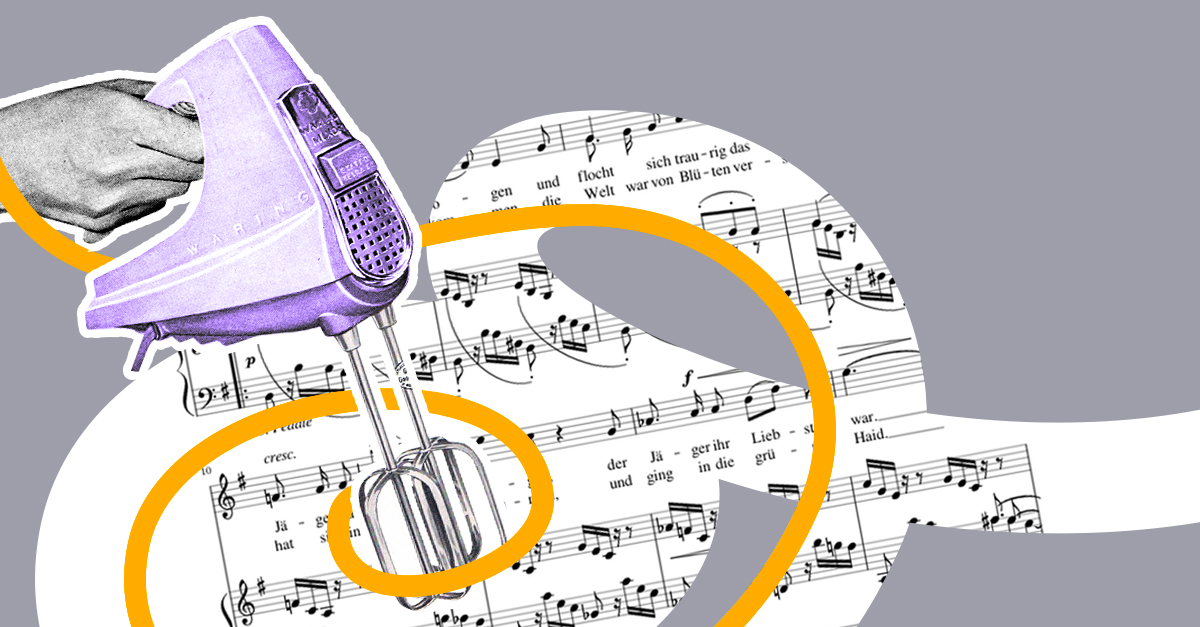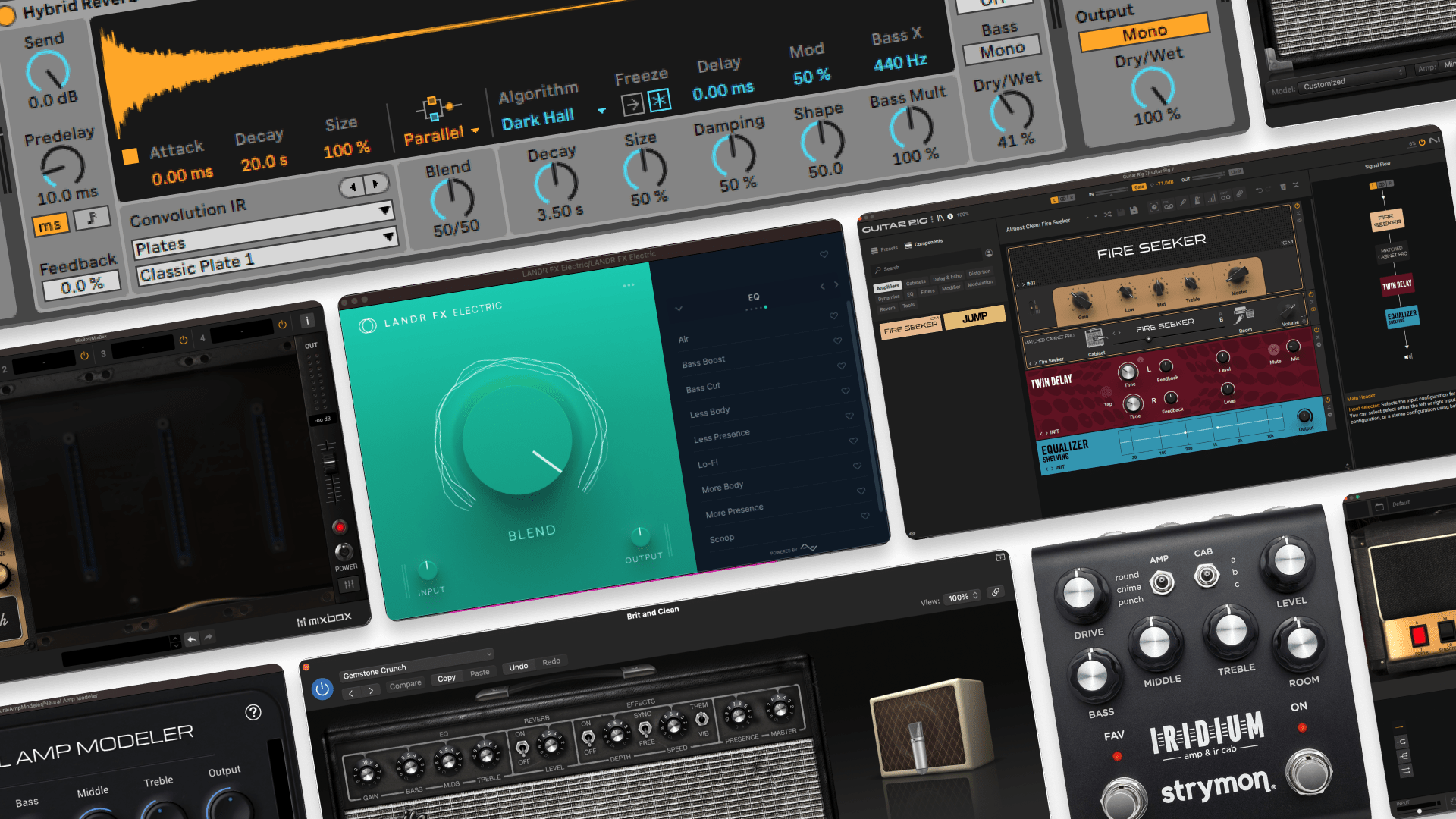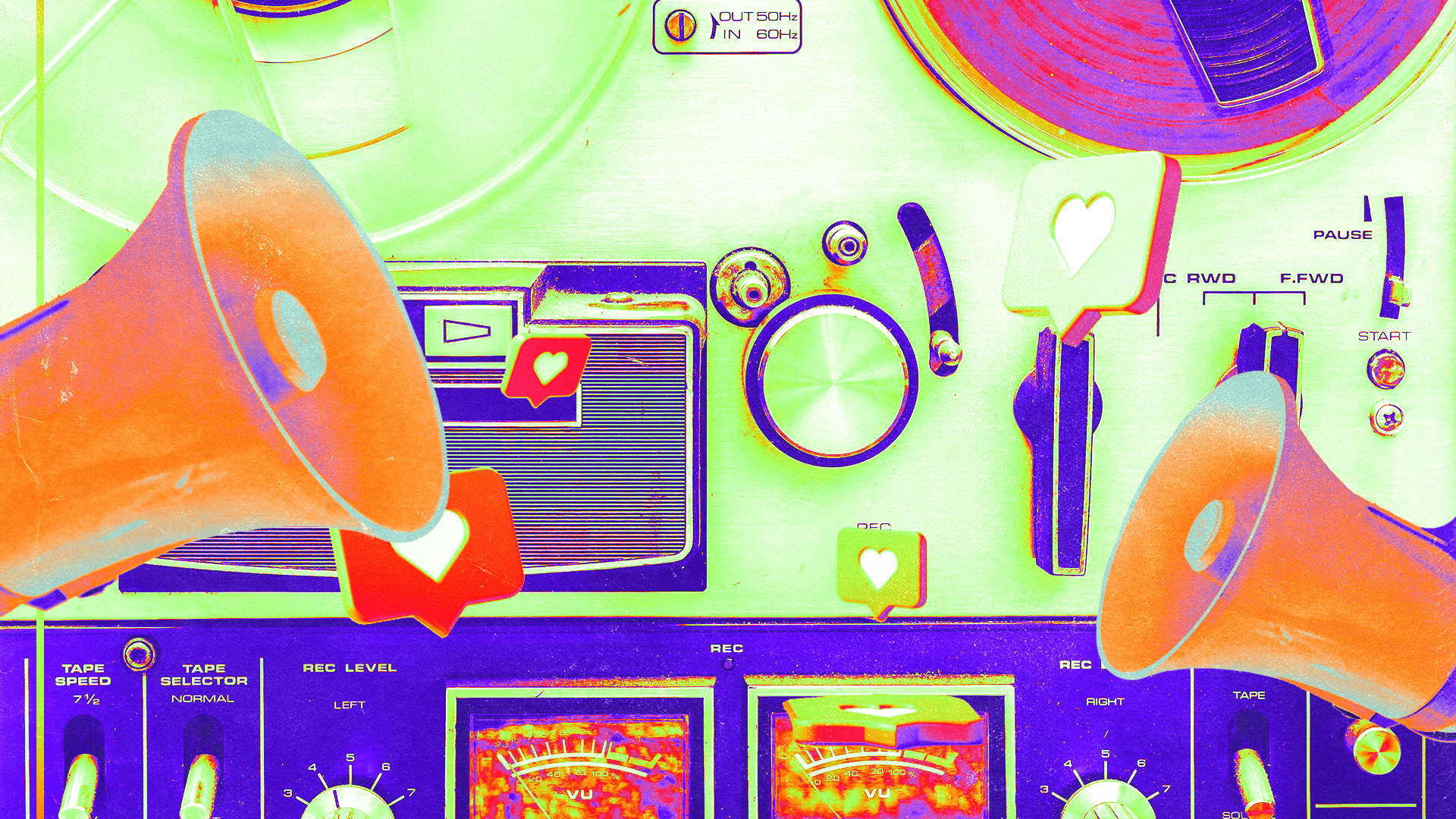
Backing Tracks: Where to Find Them and How to Use Them to Practice

Practicing an instrument takes time and dedication.
To get the most out of your practice routine it’s important to include different exercises that challenge your musical intuition.
One incredibly useful tool that you might not have thought of yet is to practice to a backing track.
In this article, I’ll dive into why backing tracks are so useful and how you can use them to become a better artist.
Plus I’ll share a few free backing tracks you can use in your practice routine.
What is a backing track?
A backing track is a piece of music designed for musicians to practice along with. Backing tracks can be as simple as a drum loop—but can go as far as having an entire chord progression and rhythm section arrangement.
Artists use backing tracks for many reasons.
Whether you’re getting started or you’re a seasoned musician, here’s a few ways you can use backing tracks in your practice routine.
1. A “fun” metronome
A click track is useful, don’t get me wrong.
But listening to that utilitarian beep hammer on and on for hours can be exhausting for the ears and draining creatively.
Instead of using a metronome, why not practice to a looping drum beat?
The point of playing with a metronome is to learn how to play in time with a drummer, so it’s just as beneficial to play along with a real drum track!
2. Learn how to feel different rhythms and genres
Another benefit of playing with a backing track is that beyond learning how to play in time, you can develop a better understanding of the feel and rhythm of different genres.
Trust me, it feels different playing to a funky breakbeat drum loop versus playing over an anthemic rock drum pattern.
Jamming to backing tracks with varying rhythms and genres develops your musical intuition and helps you become a better player and artist that’s primed to play with any group.
Become a better player and artist that’s primed to play with any group.
3. Learn how to play in different time signatures
Similar to the metronome problem, learning to play an odd-time signature to a click track isn’t always ideal—it doesn’t teach you how to really lock-in with the subtleties of an odd-time signature’s subdivisions.
With a backing track that uses odd-time or even triple meter, you can learn how to handle the difference in feel between a waltz and a shuffle or a psychedelic 7/4 riff.
4. Learn how to play different chord progressions
Learning how to play with different rhythms and different time signatures is super important.
But to take your artistic palette to the next level you should definitely start playing to backing tracks with chord progressions.
If you get good at playing with backing tracks, you’ll be good at playing with other people.
It’s the best way to combine your rhythmic sensibilities with chord theory and dramatically expand your playing abilities.
Sift through backing tracks and look for genres that appeal to you—there’s all kinds of backing tracks that focus on chord progressions for jazz, funk, soul, R&B, rock and more.
I’ll share a few great backing tracks later on in this post too!
5. Learn to solo over a chord progression
Once you lock down your rhythms and chord changes your ready for the holy grail of backing track practice—soloing over a chord progression.
The holy grail of backing track practice is soloing over a chord progression.
You can do this kind of practice for literal hours and have a blast the entire time.
Sure—it takes time to get there, but you’ll be thanking yourself next time you jam with your peers and can instantly pick out a chord progression and solo over it.
This form of inspiring practice is standard for even the highest performing professional jazz musicians, so there’s no reason why it can’t be part of your routine too!
Get free backing tracks!
Are you convinced yet? Backing tracks rule!
So, where do you find great backing tracks to practice with?
There’s a few resources out there that are worth looking into.
Jamey Aebersold is a legend among jazz students for his almost comically square jazz standard backing tracks that feature a full jazz rhythm section—drum, bass and piano.
His backing tracks are great if you’re interested in learning how to improvise over jazzy chord changes. Like the F blues in this track below.
But—if you want in on a little secret, there’s a really cool way to make your own custom backing tracks, for free!
Get free custom backing tracks with Creator
If you haven’t checked out Creator on LANDR Samples yet, you should give it a try.
If you haven’t checked out Creator on LANDR Samples yet, you should give it a try.
It’s a simple beat making tool with some pretty useful features if you want to easily put together a looping backing track in any style.
The reason I think it’s so useful as a backing track practice tool is that it easily transposes any set of samples to any key and any BPM.
That means you can quickly practice along to any key or tempo, no matter what samples you use.
To the left is a video of me jamming along to a Creator loop a friend made! See what I mean?
@landrmusicWe’re trying to make practice routines less boring. @voieboie ##drummersoftiktok ##beatmaking ##tiktokdrummer ##jamming ##producertok ##musicproducer ##fyp♬ original sound – LANDRBelow I’ll link to some very simple pre-loaded Creator loops for you to experiment with.
Remember, Creator has up to eight tracks that you can add samples to.
I’ve intentionally left these Creator loops with plenty of blank slots so you can experiment with adding samples of your own!
1. Country backing track
2. Soul backing track
3. Rock backing track
4. Indie backing track
5. Pop anthem backing trackThe coolest thing about Creator is that you can customize your backing track and set it to any key you want.
It’s a cool practice tool—not to mention it’s a great way to hear your sampling ideas for the beatmakers and producers out there.
Be ready for your next jam
If you get good at playing with backing tracks, you’ll be good at playing with other people.
Jamming is all about experimenting and having fun.
It’s not about racking your brains to remember music theory—in fact thinking too much about music theory when you’re playing will actually hold you back.
Practicing to a backing track is a fun and risk-free way to get better as a musician and develop your musical sensibilities.
Get out there and start practicing to a backing track!
Gear guides, tips, tutorials, inspiration and more—delivered weekly.
Keep up with the LANDR Blog.



